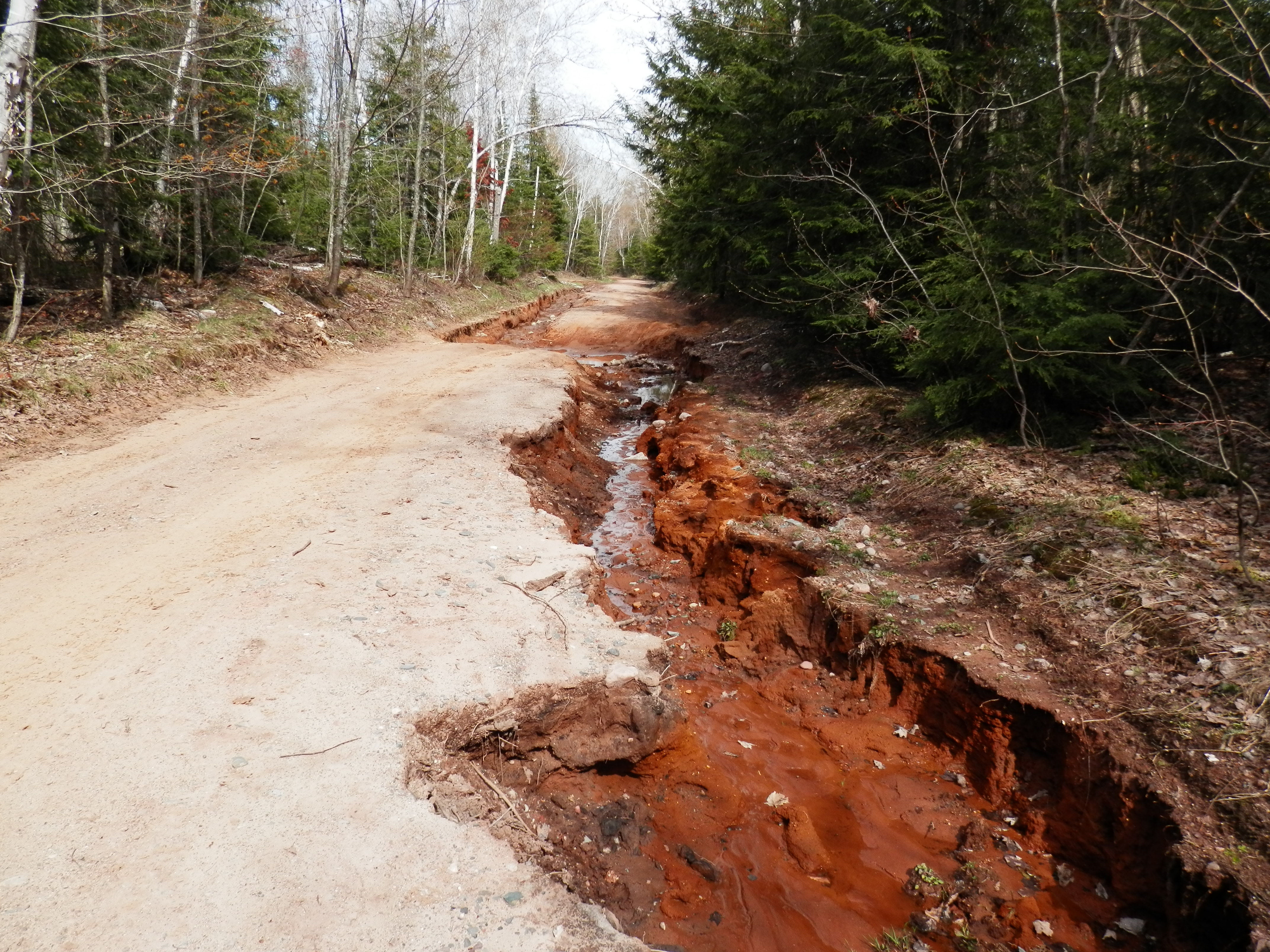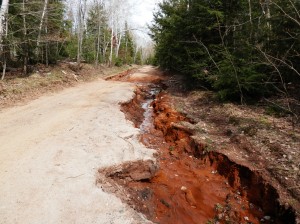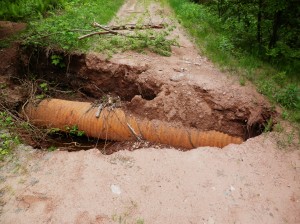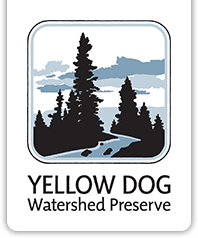
Blog > Salmon Trout Sites Completed for the Season
Salmon Trout Sites Completed for the Season

Stream monitoring for the Salmon Trout is finished for an adventurous season. With the help of several dedicated and fearless volunteers we were able to do an excellent job surveying the sites, and we will continue to finish the Yellow Dog River Volunteer Monitoring Program in July. So, if you are interested in volunteering outdoors we can still use your help in the field! Contact Christy Budnick for more information christy@yellowdogwatershed.org or call 906-345-9223.
Due to high water conditions, our Salmon Trout field crews ran into a number of roadblocks, literally. A washout on the Northwest road absolutely required a 4-wheel drive vehicle. The road was eroded down the center and was passable but only with no fear and a bit of luck. The three sites that are located off the Northwest road: East Branch, Middle Branch and West Branch all received an “Excellent” water quality score. This means that the sampling event showed relatively high numbers of macroinvertebrates that are sensitive to pollution.

The three sites in the Huron Mountain Club: STR1, STR2 and STR3, also showed an “Excellent” water quality score. By the time we surveyed these sites the water level was not as high as it was earlier this spring and made for good sampling conditions.
The Clear Creek which is located off of a local dead end road called Blind M-35, received a “Fair” water quality score for the second season in a row. Unfortunately, the road experienced a severe culvert washout which inhibited our field crew from reaching the Snake Creek sampling site this season. The location of the site is the “most accessible” portion of the Snake Creek but it is still several miles from the washout.
The low water quality score for the Clear Creek, for two seasons in a row can perhaps be attributed to sedimentation of the streambed. With high water conditions and highly eroded roads, all of that sediment is likely to end up in the creek. The road is not used very much and maintenance is very difficult. The ultimate problem is that sediment that accumulates on the stream bed fills in cobbles and makes the stream bottom sandy which limits the habitat for macroinvertebrates which are food for fish and it also impairs fish spawning.

The story of Blind M35 is interesting as construction on the route that could have gone through the Huron Mountains was halted with the help of Henry Ford in the 1920s. Henry Ford wanted to gain membership into the Huron Mountain Club a private, membership-based hunting and fishing preserve. According to now deceased and beloved local historian and author Fred Rydholm, Ford was able to cancel the uncompleted portion of the state highway and M-35 was removed from the state truckline system. (Source: Michigan Highways) Henry Ford was granted his full-time membership in the HMC soon after.
Yellow Dog Watershed Preserve will coordinate with other agencies and organizations to help fix sedimentation that is contributing to the loss of aquatic life in our stream. Funding will become more accessible with the development of our Watershed Management Plan which is in development and making progress.

